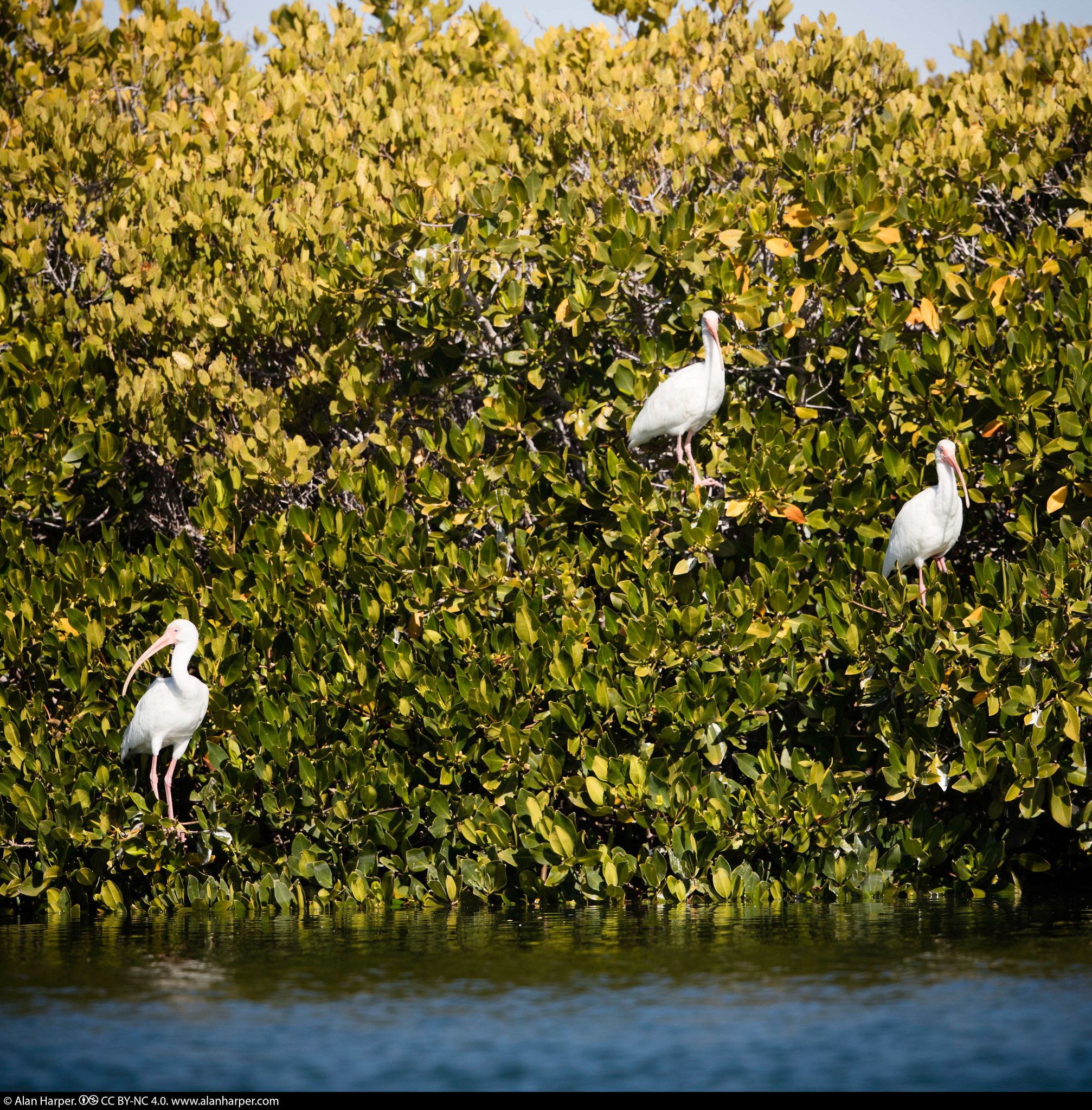Excerpt:
For over a decade, Ana María and David have led their community to restore Mexico’s desert mangroves with dedication, experimentation, and plenty of heart.
The sun sits low in the sky as David Borbón walks from one young mangrove to another, treading carefully so as not to disturb their roots. A golden glow lights the plants as he delicately checks for flowers and new growth, removing strands of dried algae and seagrass that accumulate on the saplings with the coming and going of tides. Every so often, he lets out a joyful cry upon finding a new propagule—a small, green bean–shaped seedling—growing on a tree he has planted: “My grandchild!” He takes out his phone to capture a picture of the new family member. It has taken him over a decade to get to this moment—a shoreline filled with thriving mangroves where before there was only sand—his devotion to his work unwavering.
Back in his boat, we slowly navigate the narrow channels from Borbón’s mangroves to his nearby home in the small fishing community of Campo Delgadito, mindful of our course with the dropping tide. Shorebirds scurry on the exposed mudflats, digging for their next meal. Situated on the Pacific coast about halfway down the peninsula of Baja California, Mexico, El Delgadito—“the little narrow one”—is a long spit of land jutting northwest into the mouth of Laguna San Ignacio. It’s home to 54 permanent residents, with up to 85 inhabitants during the most important fishing seasons.
Borbón first arrived in El Delgadito as a young man in 1980, and he returned seasonally for the fishing—lobster, sea bass, halibut, and clams. “[Back then], mangroves were just branches that were in the way of navigating to go fishing. I didn’t have the slightest idea of their importance,” he recalls. By the time he permanently settled in the community in the early 2000s, he was hearing stories of overfishing, even in this remote area. Fishermen boated farther, used more gear and more gas, yet still came back with smaller catches and smaller fish. Borbón and his wife, Ana María Peralta, could see the changes but weren’t sure what to do. A conversation with their daughter, who was away at university, gave them insight into their next steps. She told them what she had been learning about mangroves: how they prevented coastal erosion, stored carbon, and provided a nursery habitat for myriad fish and crustacean species, many the same as those Borbón and other fishermen in El Delgadito were catching. The trees he had barely paid any attention to became the sole focus of his attention.
Four species of mangroves—red, white, black, and sweet—grow throughout the state of Baja California Sur, which covers the lower half of the Baja California peninsula, and elsewhere in tropical and subtropical latitudes around the world. Mangroves are perhaps not what jumps to mind in desert ecosystems like that of El Delgadito, however, which sits less than one half of one degree south of all mangroves’ northern limit in the entire eastern Pacific. Mangroves here grow short and stunted compared with their tropical counterparts—even when fully developed, a species that reaches over 25 meters in height in the tropics may barely make two meters in this region. Their small stature doesn’t make them any less mighty from the standpoint of the ecological services they provide. Studies in Baja California Sur and the adjacent Gulf of California have shown that not only do fisheries landings increase in areas where there are more abundant mangroves but also that these mangroves match or even outperform tropical mangrove ecosystems in their carbon sequestration abilities…









